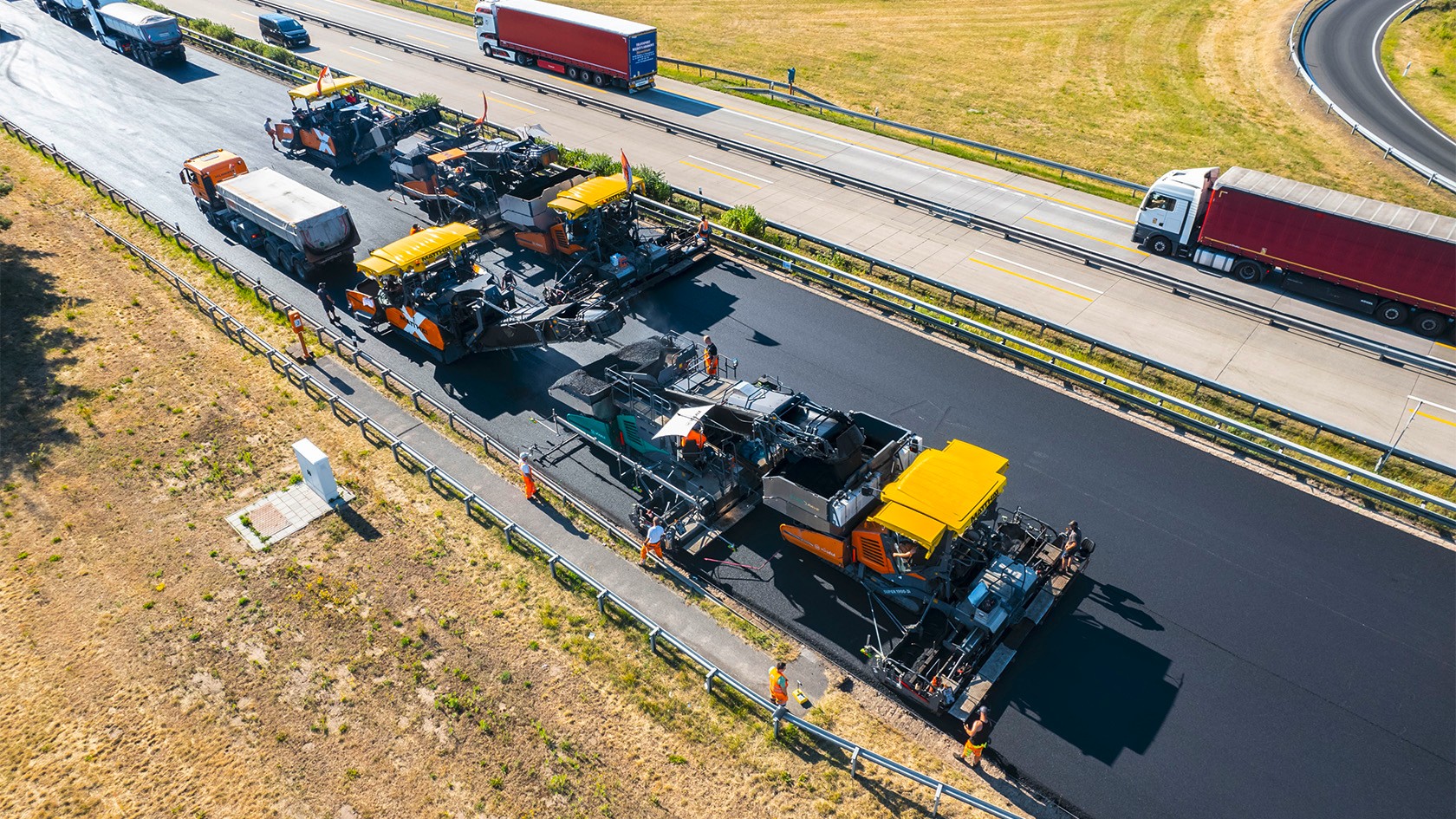The Ludwigsfelde-West intersection of the A10 highway, on the southern section of Berlin’s orbital road, is a very busy stretch subject to heavy load. As the pavement had become significantly rutted, the surface and binder courses needed renewing over a length of 4.2 km (2.6 miles) and a width of approximately 15 meters (49.2 feet). This placed high demands on the paving requirements process: to stop the ruts forming again, the new roadway had to be paved to high standards of quality, load-bearing capacity and durability. Other requirements were to conserve resources, and to reopen the stretch of highway to traffic as quickly as possible.
Photo, right: Two InLine Pave trains from Vögele were deployed simultaneously on the A10.






